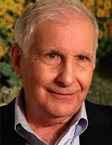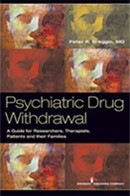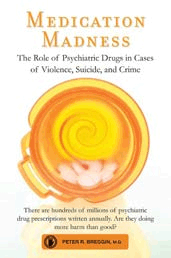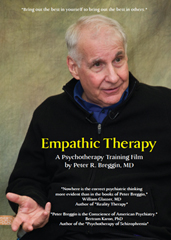Negative Study of “Trump Miracle Drug” Actually Shows It Works
The Video and the Blog Report
(Blog Report Below)
By Peter R. Breggin, MD and Ginger Ross Breggin
April 22, 2020
Today’s HuffPost happily proclaimed that once more President Trump had been proven by science to be wrong, this time about his support for the use of hydroxychloroquine for the treatment the coronavirus that is afflicting the world. Here is the HuffPost Morning Mail as it appeared in my inbox this morning:
HuffPost – TOP STORIES – Wednesday, April 22
NO BENEFIT AND MORE DEATHS FROM TRUMP MIRACLE DRUG
A malaria drug repeatedly touted by President Donald Trump for treating the coronavirus showed no benefit in a large analysis of its use in U.S. veterans hospitals. There were more deaths among those given hydroxychloroquine versus standard care, researchers reported. With 368 patients, the study is the largest look so far of hydroxychloroquine with or without the antibiotic azithromycin. [AP]
The HuffPost mailing and AP article they published are a clear demonstration that some progressives would rather see patients die than acknowledge that the President might be right about something. But more serious issues about the misuse of science are involved.
I have been evaluating drug studies in depth since the early 1990s when a federal judge in Indiana confirmed my appointment as the single medical expert to develop the scientific basis for all the more than 150 combined product liability suits against Eli Lilly & Co for its allegedly fraudulent testing and development of Prozac. The suits claimed that Prozac was causing violence, suicide and mayhem. As we demonstrated in our book, Talking Back to Prozac, the research used by Eli Lilly to get FDA approval was junk science; but it was pure gold compared to the research that claims to debunk Trump’s support of hydroxychloroquine for treatment of COVID–19.
The study can be found here, along with often cogent criticism of it at the end.
My reanalysis of the skewed data used for the study raises a strong possibility that hydroxychloroquine by itself and in combination with azithromycin (the Z-pack) was saving lives. Yes, the drugs could have been saving lives in this study and are probably continuing to do so around the world.
How is it possible that a study which claims to show that a drug which supposedly caused an excessive death rate might instead have proven that the drug was saving lives? Because the patients getting the treatment with hydroxychloroquine were much more ill—much nearer to death and much more likely to die—than the patients who did not receive the drug.
Federal government approval for hydroxychloroquine was only “authorized” for “emergency use.” In line with this, President Trump has repeatedly said, in effect, “If people are going to die anyway, why not try it?” That is also what the FDA essentially approved it for—people in an “emergency” condition. Although the guideline does not define emergency use, it would certainly rule out using it routinely and probably not at all for patients who were not deathly ill.
The study itself recognizes this flaw far into their discussion (p. 12):
Baseline demographic and comorbidity characteristics were comparable across the three treatment groups. However, hydroxychloroquine, with or without azithromycin, was more likely to be prescribed to patients with more severe disease, as assessed by baseline ventilatory status and metabolic and hematologic parameters. Thus, as expected, increased mortality was observed in patients treated with hydroxychloroquine, both with and without azithromycin. (bold added, p. 12)
It was expected that more patients would die while taking the drugs because they were being given to much sicker patients! The authors claim to have found a statistical way to overcome this fatal flaw, but there is no way to do so. Control groups would be needed in which patients who had equally bad prognoses were divided into medication treatment and non-medication treatment groups.
The study had no control groups at all.
In addition, many patients were put on the medications after attempting to treat them without the drugs. Of course, the patients on medication had a higher mortality rate—many were patients who were already getting worse on the non-drug treatments. Furthermore, the patients doing badly on no-drug treatment do not show up as no-drug failures in the study.
Furthermore, there is strong evidence that the combination of hydroxychloroquine and azithromycin was saving lives. There was “no significant difference“ in the death rates from any cause for the patients on the drug combination compared to the patients on no drugs (p. 11). In other words, although the patients taking the drug combination of hydroxychloroquine and azithromycin were probably the sickest of the sick, there was no significant increase in deaths among them compared to the much less sick patients who received no drug treatment. This suggests that the drug combination had a lifesaving impact.
My initial analysis indicates that this study probably contains significance evidence for a reduction in fatalities on the medications; but it would take a complete re-evaluation starting with the draw data to be sure.
Beyond what I have said here, this article has seemingly countless additional flaws; but there is no need to go any further that what I have observed.
When I went to the link for the article, I was startled to read the following declaration by the journal to which it had apparently been submitted:
This article is a preprint and has not been certified by peer review… It reports new medical research that has yet to be evaluated and so should not be used to guide clinical practice.
This article has not been peer reviewed and not officially published as yet. In fact, if there is an honest peer review, this article will be rejected for publication.
I want to conclude with an historical anecdote about Huff Post. I have nostalgia for the “newspaper” that was once called Huffington Post. Before it was created, founder Arianna Huffington invited me to join the new blogsite that she was creating and of course I happily agreed. Arianna and her conservative assistant, Andrew Breitbart, had been calling me and my wife Ginger on occasion for advice on Arianna’s columns. I viewed Arianna as an independent thinker, and I was proud to be included as a founding blogger on what would become her newspaper.
I did write several blogs for Huffington Post, but as the blogsite morphed into a progressive political screed, I found the increasing censorship intolerable. The editors did not like my criticism of psychiatric drugs, psychiatry, or drug companies. A few times, Arianna intervened on behalf of my freedom of speech; but she eventually sold her newspaper. The editors then invited a state Commissioner of Mental Health, an establishment enforcer, to supervise my blogs and I chose not to try to write for them any longer.
We have now reached the point that science is literally being created to meet the needs of progressive media and politics. That is very dangerous and could lead to science being viewed with the same disrespect and even disdain as the progressive media is increasingly viewed.





